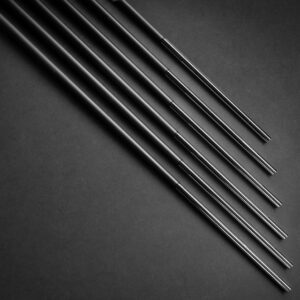Description
Steel fiber types
Several steel fiber types can be used in concrete, each with its unique properties and advantages. Some of the most common types include:
- Hooked-end fibers: These fibers have a hooked shape on one end, which helps to anchor them in the concrete matrix and improve their bonding strength.
- Straight fibers: Straight fibers are the most basic type of steel fibers and are simply straight rods or wires added to the concrete mix.
- Crimped fibers: These fibers have a wavy or crimped shape, which helps to improve their bonding strength and enhance the ductility of the concrete.
- Low carbon fibers: These fibers have a lower carbon content than other types of steel fibers, making them more resistant to corrosion and more environmentally friendly.
- Stainless steel fibers: Stainless steel fibers are highly resistant to corrosion and can be used in applications where the concrete will be exposed to harsh environments.
- Galvanized steel fibers: Galvanized steel fibers are coated with a layer of zinc, which helps to protect them from corrosion and extend their service life.
- Alloy steel fibers: Alloy steel fibers are made from a combination of different metals and can be customized to meet specific performance requirements.
The benefit of steel fiber
The addition of steel fibers to concrete can provide several benefits, including:
- Increased tensile strength: One of the primary benefits of steel fibers is their ability to improve the tensile strength of concrete. This can help to prevent cracking and improve the overall durability of the concrete.
- Enhanced ductility: Steel fibers can also improve the ductility of concrete, allowing it to deform without cracking under stress. This can be particularly useful in seismic-resistant structures, where the ability to absorb energy and deform under load is critical.
- Improved durability: Steel fibers can help to improve the durability of concrete, making it more resistant to wear, abrasion, and corrosion. This can extend the service life of the concrete and reduce the need for maintenance and repair.
- Reduced cracking: By improving the tensile strength and ductility of concrete, steel fibers can help to reduce cracking and improve the overall performance of the structure.
- Cost savings: The addition of steel fibers can reduce the amount of steel reinforcement required in the concrete, which can lead to cost savings and reduced construction time.
- Increased safety: By improving the durability and performance of the concrete, steel fibers can help to increase the safety of the structure and reduce the risk of catastrophic failure.
Working principle of steel fiber
The working principle of steel fibers in concrete is based on their ability to bridge cracks and improve the overall mechanical properties of the concrete. When concrete is subjected to tensile stresses, such as those caused by bending or stretching, it can crack and fail. However, the addition of steel fibers to the concrete mix can help to prevent or mitigate this cracking. Steel fibers work by transferring stresses across the cracks that form in the concrete. As the concrete begins to crack, the steel fibers are pulled tight and begin to bridge the gap between the two sides of the crack. This helps to distribute the stress more evenly across the concrete and prevent further cracking.
In addition to improving the tensile strength of the concrete, steel fibers can also enhance its ductility and impact resistance. By allowing the concrete to deform without cracking under stress, steel fibers can help to absorb energy and reduce the risk of sudden failure or collapse. The working principle of steel fibers in concrete can be influenced by several factors, including the type and amount of fibers used, the concrete mix design, and the conditions under which the concrete is poured and cured. By carefully selecting the appropriate fiber type and optimizing the mix design, engineers and builders can ensure that the steel fibers effectively improve the performance and longevity of the concrete structure.
-1.jpg)
.jpg)
.png)
-1.jpg)
.jpg)
.jpg)
-300x300.jpg)

-300x300.jpg)
Reviews
There are no reviews yet.